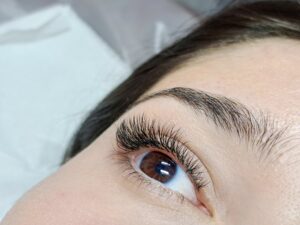Cosmetic surgery to reinvigorate the face is a popular, powerful, and time-tested method of reducing the presence of saggy skin, wrinkles, fine lines, and other facial-beauty factors. Even so, given the important effects of cosmetic plastic surgery, more people prefer non-surgical procedures to attain a young, refreshing look.
James Christian Sardelli, RPA-C, a professional cosmetic injector, is frequently asked if anyone should prefer a dermal filler over a facelift to achieve the desired look. “The answer is not always easy because it depends on what the person wants to achieve,” he answered.
Dermal Fillers or Facelifts?
When you are planning to revitalize your beauty, you might be considering a facelift or a dermal filler. Dermal fillers and facelifts are both widely known cosmetic procedures. Dermal fillers regain lost volume, which can be executed by either a dermatologist or maybe even a certified nurse injector. On the contrary, facelifts are executed by a board-certified cosmetic surgeon and are great choices for those who seek to resolve not just wrinkles and fine lines, but also saggy skins. Furthermore, it is essential to analyze the distinction in terms of understanding which treatment is best for you to achieve your goal. Let us take a closer look at some comparisons to help you decide which is the better procedure to do in achieving your goal.
Ideal Candidates
Dermal fillers offer a non-surgical approach to several noticeable signs of aging. It’s recommended for people who do not like and trying to avoid surgery, looking for a fast and effective result, and experiencing premature aging and/or non-sever issue. This option is best suited for individuals with mild to moderate signs of aging and to those who are trying to avoid surgery.
Facelifts, also known as Rhytidectomy, aim to decrease the presence of wrinkles and saggy skin around the face, cheeks, nose, neckline, and jaw. Since this procedure is done with surgery, there are some important factors to consider such as the skin’s elasticity, sturdy bone structure, good health condition, and must be able to commit to the pre-surgical and post-surgical procedures required. This option is best for those who have moderate and severe loose skin.
Procedure Cost
Facelifts cost more than dermal fillers since it’s done via surgery. Although it varies from patient to patient, a facelift operation can cost more than $10,000, while a dermal filler treatment is usually below $5,000.
Another thing to consider is the maintenance of the dermal fillers. Dermal filler treatments must be sustained by continuing future treatments because they are only temporary. Depending on the filler used, it can last from 6 to 12 months, while other fillers can last from 2 to 5 years. Thus, when it comes to the cost, dermal fillers can grow to be more costly in the future due to its maintenance.
Side Effects
The side effects of the facelift include infection, bleeding, blood clots, hair loss at incision area, prolonged swelling, complications when it comes to wound healing, scarring, and cardiac events.
As for the dermal filter, the common side effects that the patient may feel are swelling, rash, redness, pain, bruising, and itching. Further, for some patients, rare side effects might occur such as infection, injury to the blood vessels, an inflammatory reaction to the filler, leakage of the filler through the injection site, movement of the filler from one place to another, and tissue death.
Recovery
An advantage of a dermal filler treatment is that it requires minimal recovery time, which allows the dermal filler recipients to keep on doing their daily activities. This non-surgical procedure allows you to obtain concrete results without being laid up for a couple of days or weeks.
As for the facelift surgery, it needs time to recover. The recovery time for this treatment will take about 2 to 3 weeks. Moreover, keeping the head elevated and adding ice to the treated part is essential for this.
Results
Dermal fillers are temporary and don’t last that long. Most fillers can last from 6 to 12 months, while others can last from 2 to 5 years, depending on the filler used.
Facelifts last longer compared to dermal fillers. They usually last from 7 to 10 years. Keeping a healthy overall way of living and taking care of your skin can extend the life of your facelift.
Dermal Fillers for a Younger Looking You
There are several forms of dermal fillers effective in controlling the aging process. The 4 major fillers are Juvéderm®, Volbella® XC, Voluma®, and Restylane®. For softening out the fine lines and minor wrinkles, adding volume to the face by applying fillers such as Juvéderm® and Volbella® XC, which includes hyaluronic acid (HA), is the perfect solution to solve these signs of aging. The said fillers can also be used as a lip plumper. Another filler is the Voluma®, which is applied to add volume to the cheeks. Lastly, is the Restylane®. Restylane® is applied to supply the emptied temples.
*Information in this article is not medical advice and may not be factually accurate. It is intended for entertainment purposes only. Consult with a physician before attempting any tips in this blog post and to get the most up to date factual data about any procedure or treatment.














